TABLE OF CONTENTS
What are the best CPUs with integrated graphics?
More importantly, what are integrated graphics, and how can you expect them to perform in real-world scenarios?
By the end of this article, I’m hoping that you’ll have a concrete understanding of CPU Integrated Graphics and be able to make an informed purchasing decision for or against them, now or in the future.
So, let’s start with the basics. Or you can use the table of contents above to jump around to your heart’s content— I can’t stop you now.
All You Need To Know About CPU Integrated Graphics (iGPU)
What are CPU Integrated Graphics?
In older PCs, things like graphics and even sound had to be managed by an expansion card instead of a CPU for quite a long time.
The first integrated graphics were actually present in this era as well, but as part of a chipset on a motherboard rather than the CPU.
Desktop CPU integrated graphics didn’t debut until Intel’s Westmere iGPU chip in their 1st Gen Core series.
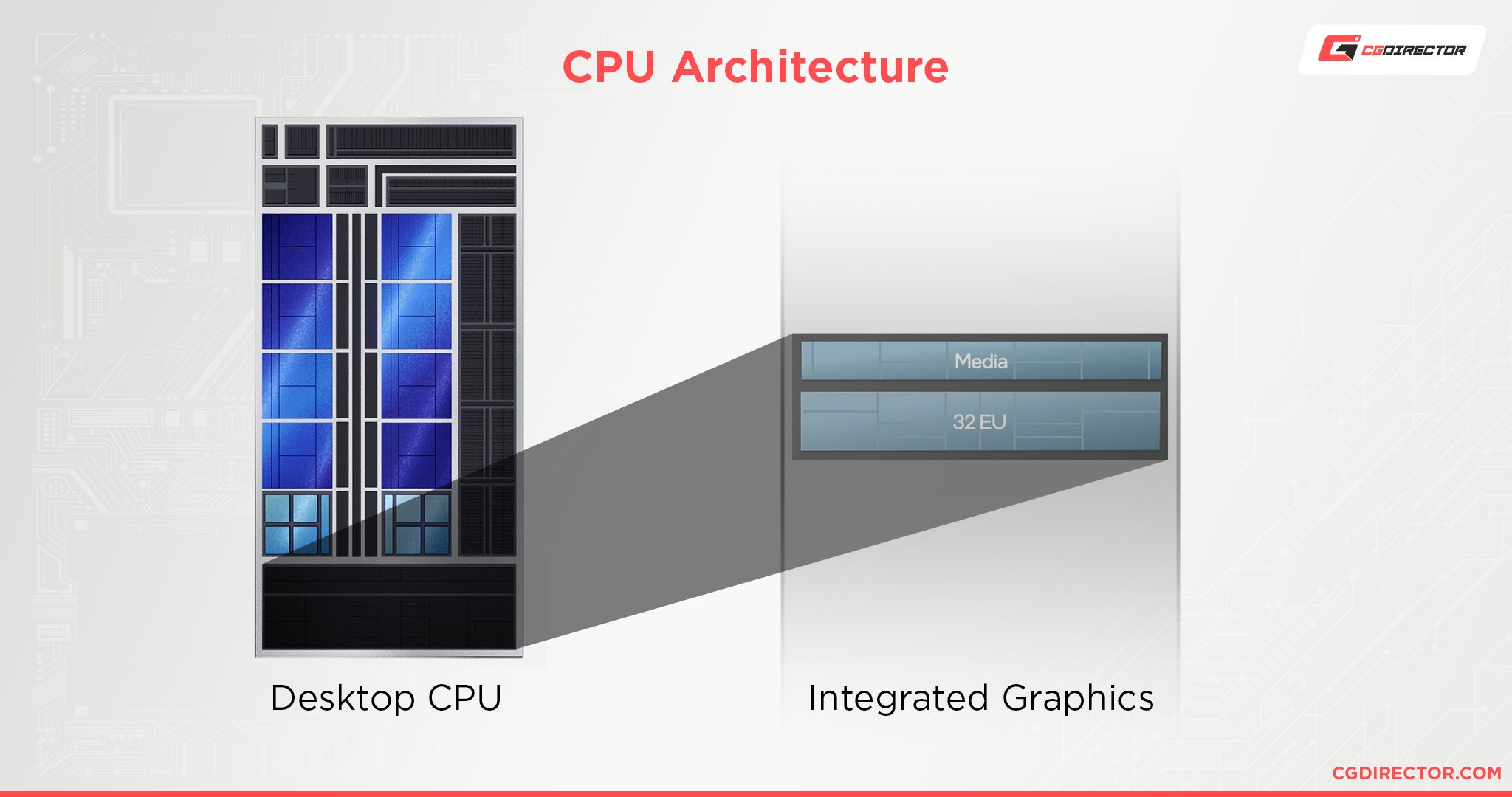
AMD followed shortly after that and quickly renamed the concept to something else after five years for marketing purposes.
The APU, or Accelerated Processing Unit, is AMD’s term for a CPU with integrated graphics.
AMD doesn’t seem to be using the APU terminology as much these days— it’s nowhere to be spotted in their product listings in 2022— but it was very prominently used when they debuted their version of the tech.
Compared to a regular graphics chip in a discrete graphics card, integrated graphics are just that— a mini graphics processor integrated into another processor or board.
Are all CPUs with Integrated Graphics APUs?
AMD won’t say so, but pretty much, yes.
The main meaningful distinction at the time of writing is that Intel’s Desktop GPUs are able to synchronize with their iGPUs in the same way AMD’s older APUs could sync with Dual Graphics.
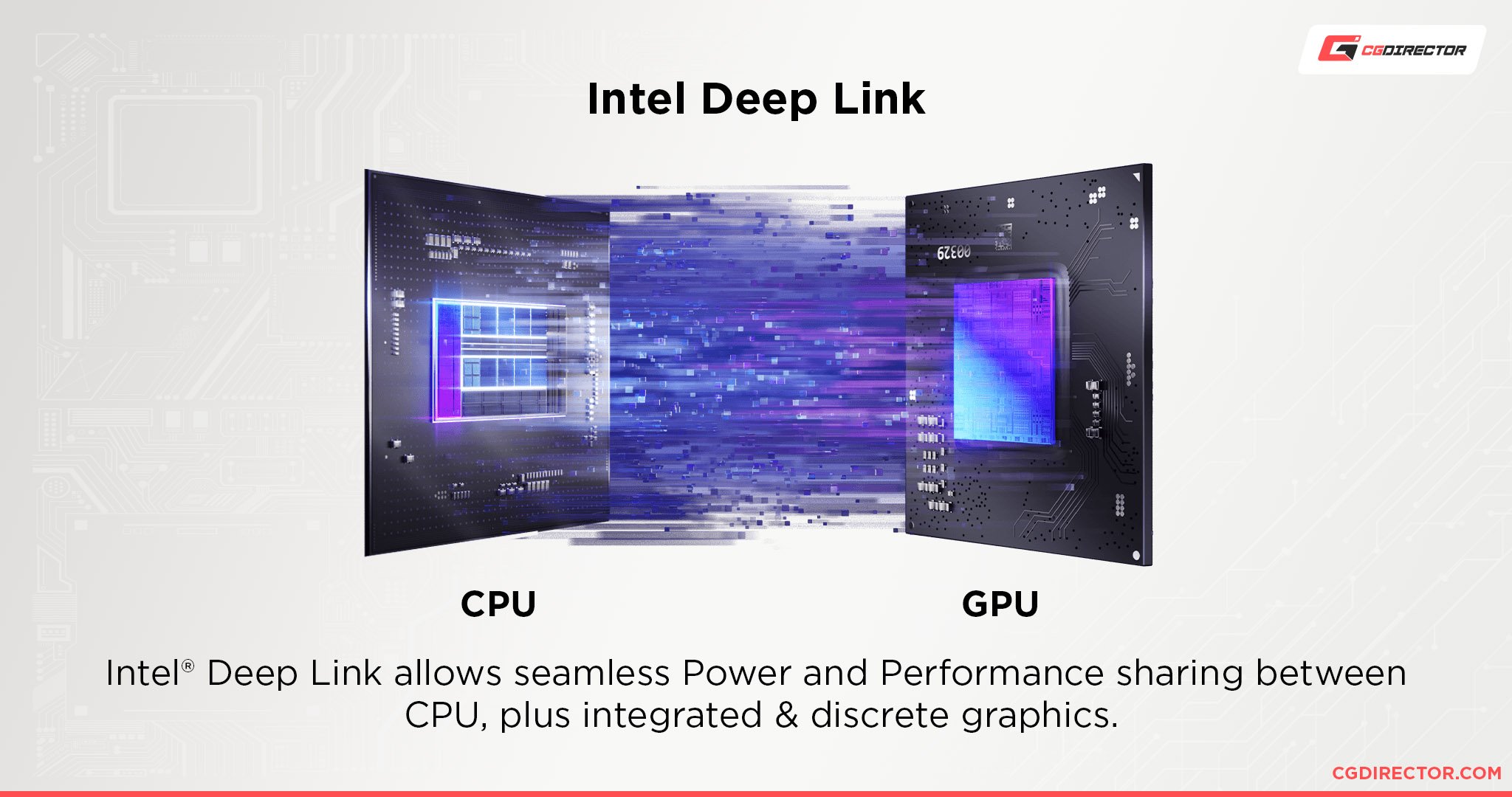
Dual Graphics was a feature that allowed old AMD iGPUs to work in tandem with AMD GPUs, enhancing the performance of both and allowing them to be pooled toward the same task via CrossFire.
Unfortunately, AMD no longer officially supports CrossFire or Dual Graphics, as multi-GPU support for gaming and non-professional tasks isn’t a thing anymore. Intel Deep Link is supported by Intel Arc GPUs, but has almost no impact on gaming performance— it can help accelerate certain GPU compute workloads in supported applications, though, like Open Broadcaster Software.
Are all discrete GPUs better than iGPUs?
Most discrete GPUs exist in a product class that is distinctly more well-specced and performant than iGPUs.
Most mid-range GPUs can easily boast over twice the performance of an iGPU, but market conditions can make those competitive options less viable at times.
In the case of low-end GPUs, iGPUs are closing in with current-gen technologies rapidly. The best iGPUs, like the AMD Radeon 780M based on their RDNA3 architecture, outperform past-generation entry-level GPUs like the GTX 1050 Ti. Rumor has it that 15th Gen Intel iGPUs will perform on this level, too!
More on the present state of iGPU performance below. In summation, though, iGPUs are most directly comparable to entry-level GPUs than anything else, and they’re even starting to implement ray tracing hardware (albeit with very limited performance for real-time gaming).
Why Integrated Graphics Need Fast RAM
Before diving into how you can expect iGPUs to perform on different tasks, let’s talk about something that will heavily impact your iGPU performance in all scenarios: RAM Speed.
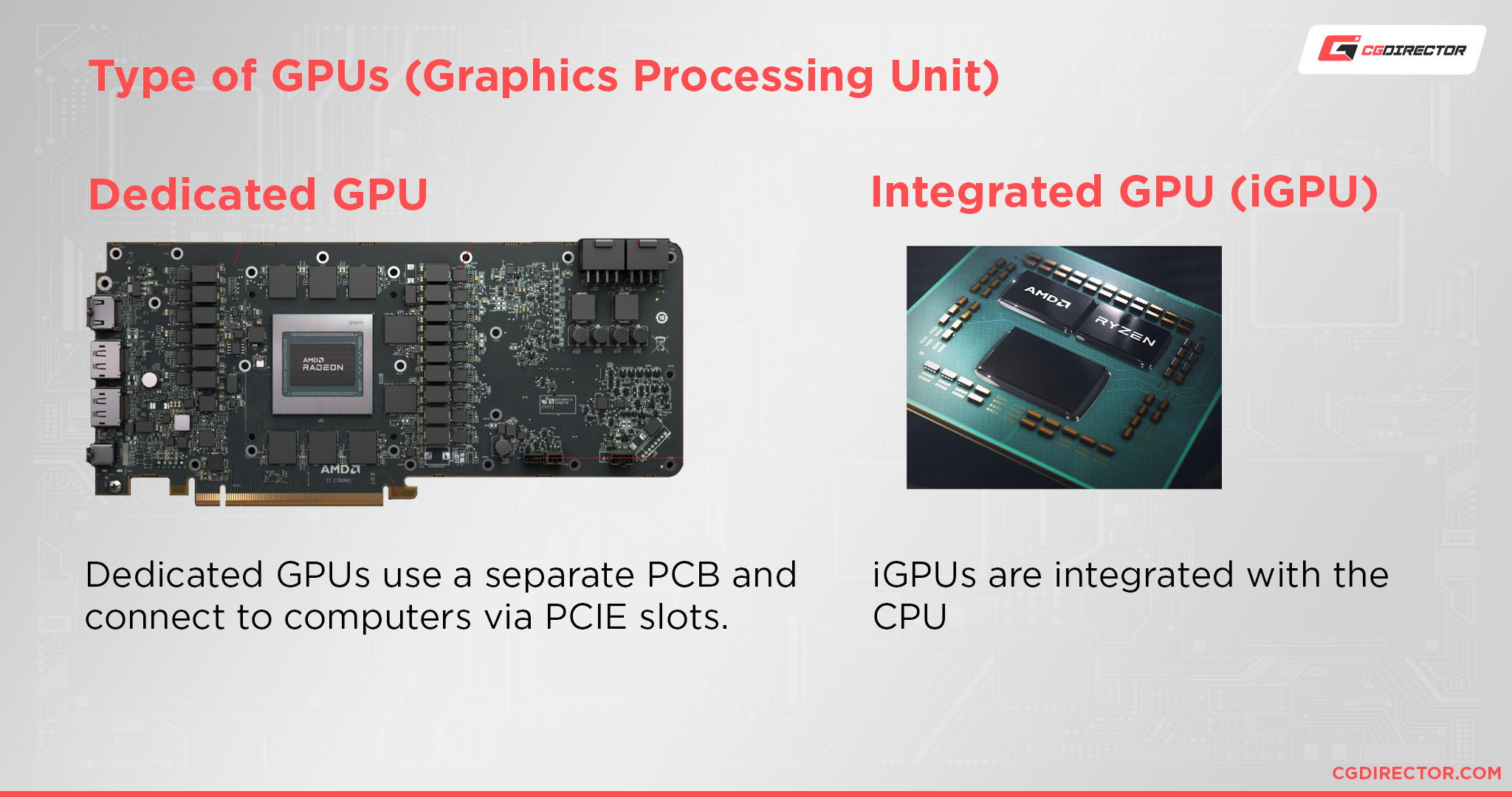
RAM and VRAM (Video RAM) are meant to be separate components.
A discrete GPU will have VRAM specially manufactured for processing graphics, whereas an iGPU has to rely on the same kind of RAM as the rest of the CPU.
This is much slower by nature, but you can alleviate the performance deficit by buying fast RAM that can be run at stable, high clocks on your motherboard.
With faster RAM acting as your VRAM, you’ll enable the best possible performance out of your integrated graphics chip.
Even better, if you can get your RAM in capacities of 16 GB or higher, you have more RAM that can be allocated as VRAM to your iGPU.
This won’t be as good as having a speedy discrete GPU with proper VRAM, but it’ll still be considerably better than falling back on SSD or even HDD speeds when running out of VRAM.
How Modern CPU Integrated Graphics Perform In Productivity Tasks
Modern integrated graphics solutions are more than enough for most general productivity tasks and media consumption.
Most productivity tasks aren’t particularly taxing on graphics hardware— usually, they take up RAM or CPU time more than anything else.
For example, running many Chrome windows and tabs will rack up plenty of RAM (and CPU usage if they’re active windows), but most likely very little of your GPU unless a video is being played.
Even when a video is being played, integrated graphics have been capable of 4K media playback for years now.
Even Intel’s iGPUs, which are generally far weaker than AMD’s, have been called Intel UHD Graphics for this reason since 2017.
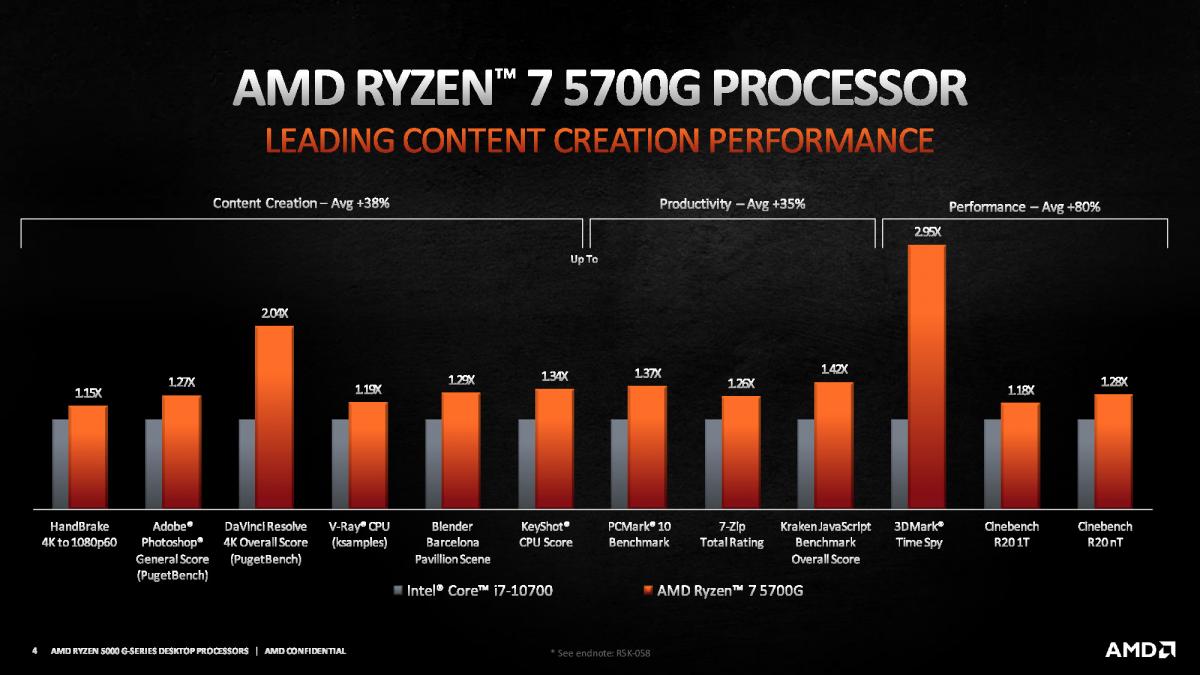
Source: AMD
4K media playback isn’t so demanding on raw graphics horsepower as it is on simply having the compatible and modern enough display technologies available to you.
For example, many perfectly powerful graphics cards can’t do real-time ray-tracing or HDR because they were simply released before those features were properly supported.
So as far as any general productivity uses go, the modern iGPU is more than enough. (For things like file compression and conversion, you’re probably better off using your actual CPU cores.)
How about some more heavy-duty rendering and production tasks, though?
How Modern CPU Integrated Graphics Perform In Rendering Tasks
Once we get to more heavy-duty tasks like video rendering and encoding…well, you’re actually more likely to want to use your CPU cores than your iGPU.
Even for things like video rendering and encoding, CPU cores provide a faster and higher-quality result than a relatively weak iGPU will be able to turn around.
Now, make no mistake: an iGPU can still be used to accelerate these tasks, even if you’re mainly using your CPU cores.
For instance, an iGPU can accelerate the video in an editing timeline, allowing for a smooth video editing experience as long as the rest of your system (namely RAM and storage) are up to snuff.
However, of the majority of professional rendering tasks, the actual CPU will be the better choice than the low-power iGPU that they managed to stuff onto it.
Once you get to workloads that expect high GPU-accelerated power (for example, Blender or a proper GPU render engine like Redshift), GPUs simply aren’t competitive with the mid-to-high-range discrete GPUs required for those tasks.
How Modern CPU Integrated Graphics Perform In Games
Now, how do modern integrated graphics perform in games? For this section, I’ll be focusing primarily on desktop integrated graphics solutions, since they’ve kind of stagnated in the past few years and recommending CPUs means recommending desktop CPUs. I’ll take some time to discuss how iGPUs are doing in the laptop and handheld space in the next section, but for now let’s focus on iGPU performance in PCs you can build yourself.
First up, the market leader of desktop iGPU performance is still AM4-based, AMD Ryzen 5000 G-Series CPUs. Newer AMD CPUs also have iGPUs, but they’re much less performant— more on that in a bit. For now, let’s discuss what you can expect from Ryzen G-Series iGPU performance.
At 1080p, the Ryzen G-Series Desktop processors aren’t quite cutting it in modern titles, often dipping below 20 FPS in the most cutting-edge games. iGPUs in general are best used at 720p resolution and low settings for your best chances of reaching 60 FPS, or even higher FPS in (typically more lightweight) eSports-focused titles.
The more recent 14th Gen and 13th Gen Intel iGPUs are actually starting to fare better than AMD’s now-outdated Ryzen 5000 G-Series fare, but unfortunately they still aren’t enough for a solid modern gaming experience at 1080p. You’ll still want to take on the lowest settings possible and a 720p resolution if you’re gaming with desktop CPU-based integrated graphics, and this remains a pretty common target with more portable (even more powerful) iGPU setups as well.
A Note on Desktop vs Laptop and Handheld Integrated Graphics
So, before we get too much farther into this article, I think I should take some time to clarify that currently, the best iGPUs aren’t available on desktop at all. Instead, the best iGPU technology these days is consistently being seen in the fields of gaming laptops and especially handheld gaming PCs, which tend to require a similar SoC (System-on-Chip) design as proper gaming consoles do. (And yes, technically the PlayStation 5 and Xbox Series S/X are, in fact, using AMD iGPUs with their AMD CPUs due to that SoC design.) Outside of the console space, the best iGPU performance we’re seeing is from the Radeon RX 780M, which is based on AMD’s latest RDNA 3 architecture and is integrated with mobile Ryzen 7040 Series CPUs.
The gaming performance enjoyed by the RX 780M, especially as outlined in the video above, is above that you can expect from (current) desktop iGPUs. They’re borderline suitable for proper 1080p gaming, and more than enough for 720p gaming! Considering the above testing is still reaching almost 60 FPS and not even using Low settings consistently, it’s clear that the 720p performance on offer from the likes of the RX 780M is fairly impressive. It’s actually the same iGPU used in the ASUS ROG Ally handheld, which is estimated to be up to 50% faster in graphics performance compared to the incumbent Steam Deck.
A Note on Desktop Ryzen iGPUs
Another point worth covering is that while AM5 socket Ryzen processors don’t require a Ryzen G-Series CPU for iGPU functionality…they’re also significantly worse than the AM4-based Ryzen iGPUs, at least for now. Below, I’ve embedded a screenshot comparing the peformance of the latest Ryzen iGPUs compared to 12th Gen Intel iGPUs and AM4 Ryzen iGPUs.
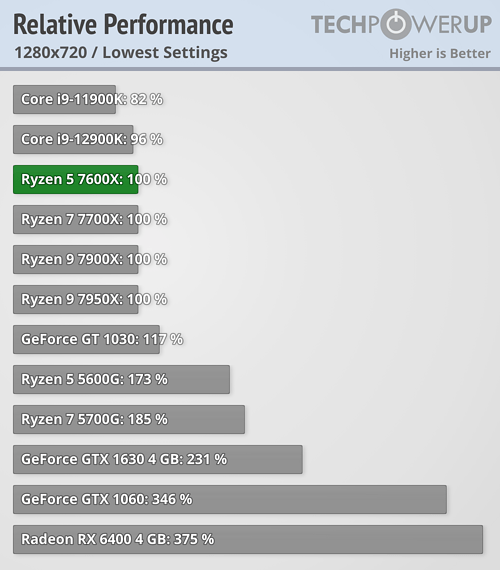
Image Source: TechPowerUp
In a way, this makes sense, but it’s unfortunate for AM5 users who might have been hoping for some decent iGPU performance. Since AMD iGPUs typically outperform Intel’s, it’s something of a shame to see them fall into the same league (and behind) when compared to more recent Intel offerings. Come on, AMD! Give us a Ryzen desktop chip with some RDNA 3+ graphics onboard, then you’ll really be cooking!
The Best CPUs With Integrated Graphics Available Today
The Best Entry-Level CPU With Integrated Graphics: AMD Ryzen 5 4600G
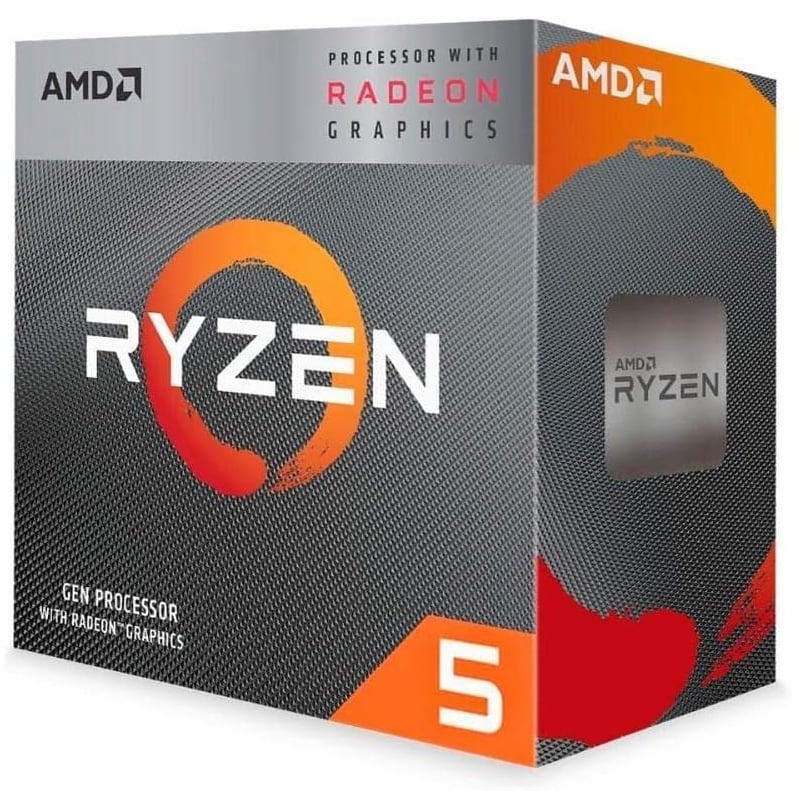
Image-Credit: AMD
Specs:
- iGPU: Radeon Vega 7 with 7 Graphics Cores at up to 1900 MHz
- Cores: 6
- Threads: 12
- Socket: AM4
Pros:
- Under $100!
- A marked improvement over the AMD Athlon APUs which were previously the only AM4 APUs under $100.
- A perfectly adequate entry-to-mid-range gaming or productivity CPU whenever you get a proper graphics card.
Cons:
- Slightly weaker graphics solution than Ryzen 5000 iGPUs, but not by much.
The Best Value Intel CPU With Integrated Graphics: Intel Core i5-12600K
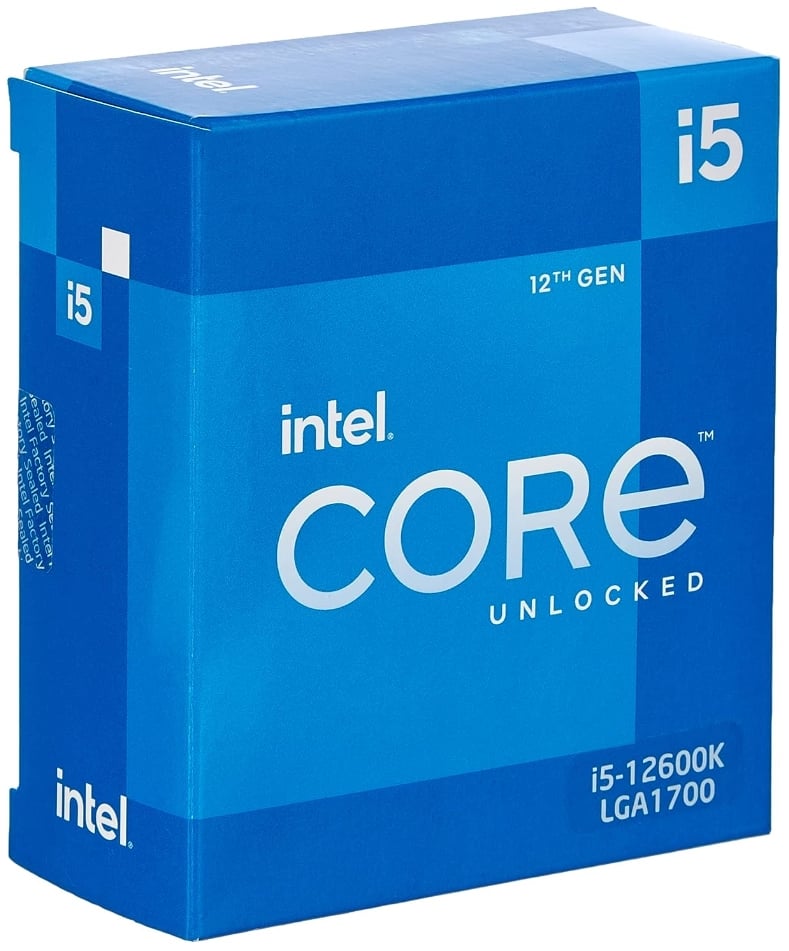
Image-Credit: Intel
Specs:
- iGPU: Intel UHD Graphics 770 with 32 execution units and up to 1450 MHz
- Cores: 10 (6P + 4E)
- Threads: 16 (E-cores don’t have SMT)
- Socket: LGA1700
Pros:
- One of the cheapest ways to get onto Intel‘s 12th-to-14th Gen motherboard socket!
- Same iGPU used in newer, higher-end, far more expensive Intel CPUs.
Cons:
- Intel Desktop iGPUs are still quite weak in comparison to the AMD AM4 iGPUs, but better than the AMD AM5 iGPUs thus far.
The Best Value AMD CPU With Integrated Graphics: AMD Ryzen 5 5600G
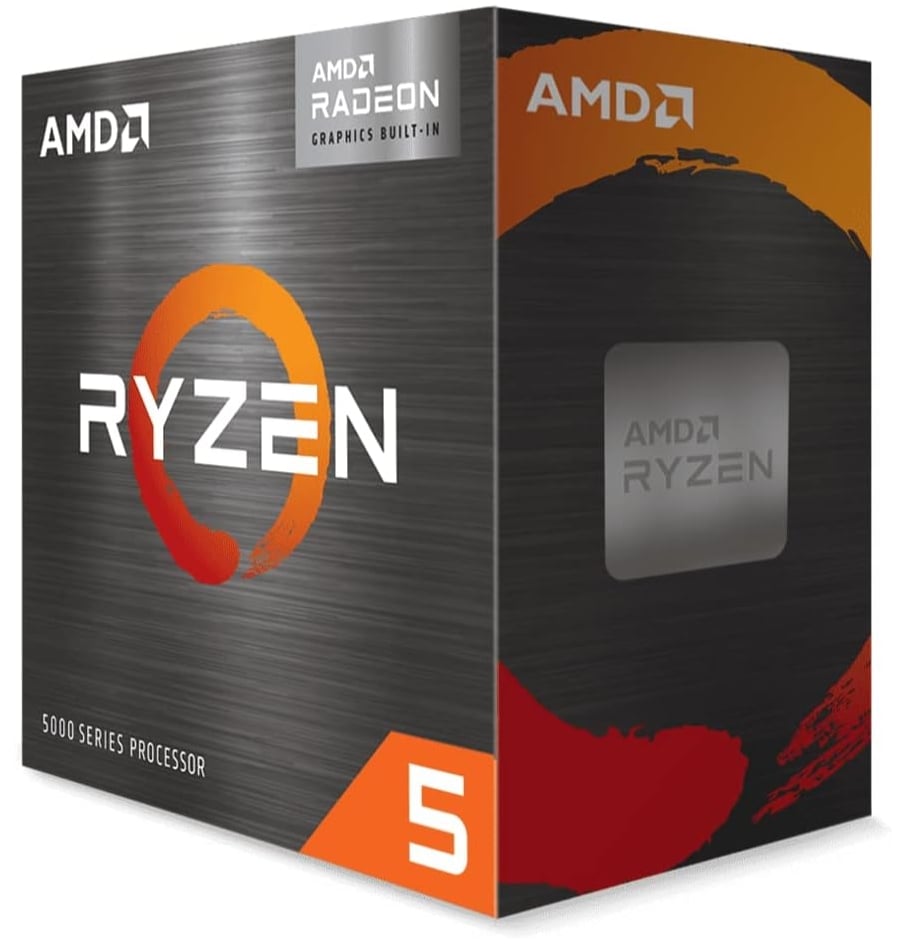
Image-Credit: AMD
Specs:
- iGPU: Radeon 7 with 7 Graphics Cores running at up to 1900 MHz
- Cores: 6
- Threads: 12
- Socket: AM4
Pros:
- A better, newer Ryzen CPU with onboard integrated graphics!
- Achieves roughly 90-95% of the iGPU performance of the more-expensive Ryzen 7 5700G.
- Updated Ryzen architecture (the last gen of AM4) should improve
Cons:
- Not that much better than Ryzen 5 4600G in terms of iGPU performance.
FAQ
Can an iGPU be used with a discrete GPU at the same time?
Yes and no.
As mentioned earlier in the article, AMD once offered a feature called Dual Graphics that allowed their early iGPUs to run in CrossFire with discrete Radeon graphics cards, increasing performance.
That feature and CrossFire itself (AMD’s multi-GPU solution, SLI and NVLink being Nvidia’s) are unfortunately no longer supported, but it has returned (in limited capacity) with Intel’s Dual Link feature for their discrete GPUs.
Most of the time, you cannot synchronize an iGPU with a discrete GPU in, say, SLI or CrossFire.
However, you can still use an iGPU while using a discrete GPU!
For example, Intel QuickSync/AMD Video Core Next allows for iGPU-accelerated video encoding for streaming and recording.
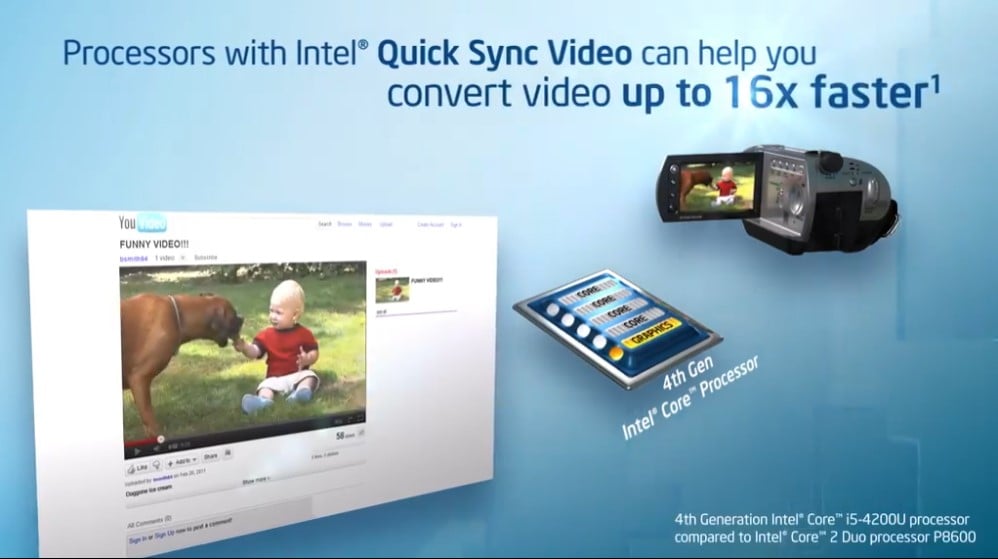
Source: Intel
In professional workloads where you can pick and choose rendering devices, iGPUs are handy as a way to alleviate stress on the rest of your system.
If you want to learn more about multi-GPU solutions on desktop, Alex wrote a concise guide on NVLink vs SLI, including benchmarks.
Are CPUs with Integrated Graphics still good with a discrete graphics card?
Of course! Even if you can’t find a use for the iGPU after upgrading your graphics card, most of these CPUs are fairly powerful in their own right, boasting current-gen CPU architecture.
If anything, not being reliant on your iGPU will allow you to make more use of your actual CPU horsepower than ever, since CPU power alongside GPU power restricts maximum framerate.
However, it’s important to note that one of the main ways you would utilize an iGPU alongside a discrete card— as an extra rendering device due to its encoder— is somewhat supplanted by the graphics card itself.
Modern graphics cards from AMD and Nvidia have built-in encoders that are separate from the main GPU chip but still provide high-quality direct recordings and streams.
Your uses for the actual iGPU will become very limited after upgrading to a discrete graphics card…but that is kind of the point.
Any RAM Recommendations For Users of Integrated Graphics?
If you’re going to be using integrated graphics, you should make the most of the experience by pairing them with great RAM.
For this purpose, especially if you’re going with a Ryzen CPU, I highly recommend going with RAM manufactured under Samsung’s B-Die process if you’re on a DDR4 platform.
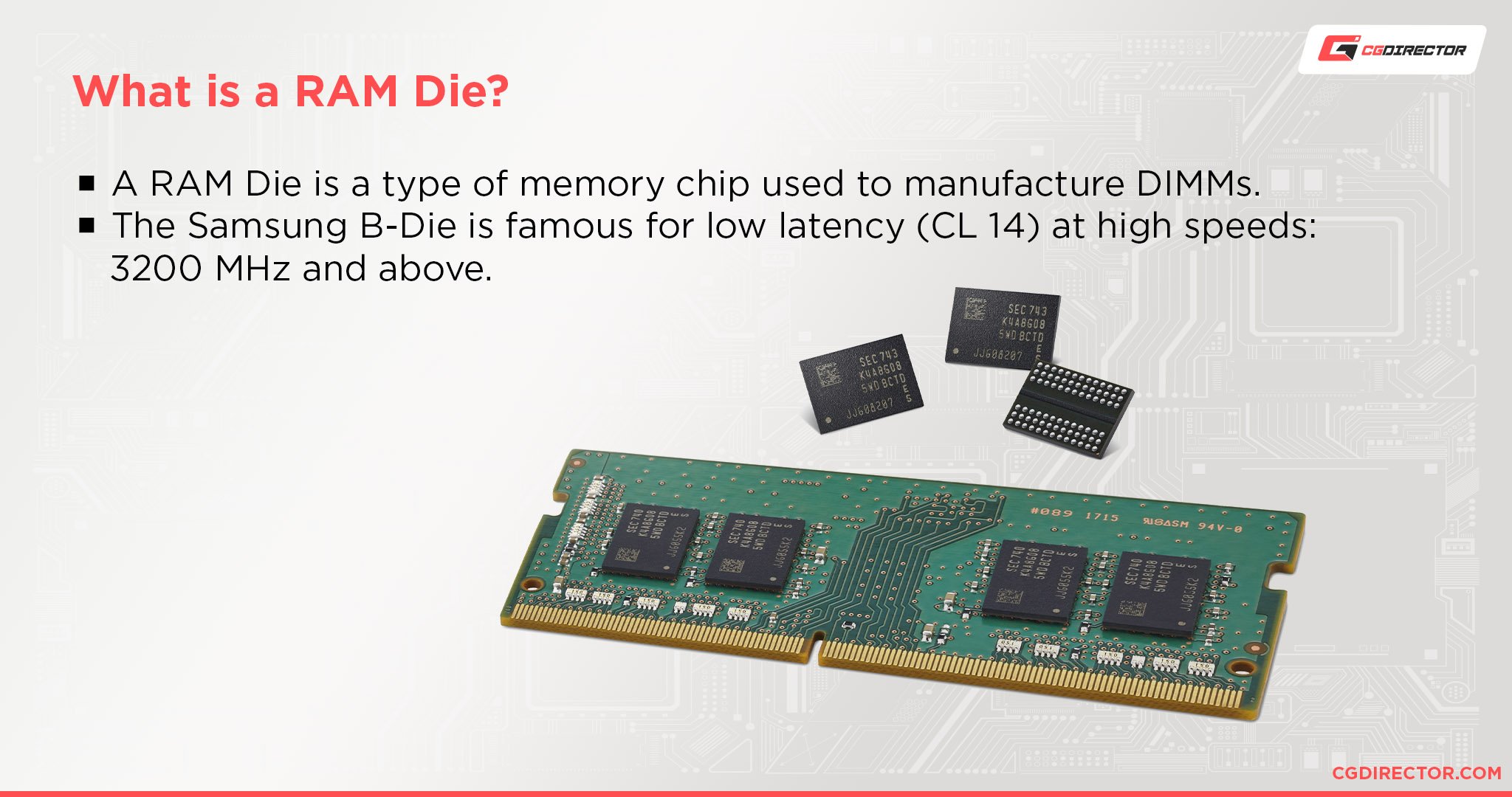
B-Die RAM on DDR4 is great for running at high speeds and low latencies alongside AMD and Intel processors alike, allowing for things like single-core CPU performance and iGPU performance to be maximized.
For DDR5 RAM, you’ll generally just want to target high-speed, low-latency RAM as much as possible.
Over to You
And that’s it, at least for now!
I hope that you learned what you needed about CPUs with integrated graphics from this article. Leave a comment below or send us a message in our forums and let us know: what CPU and iGPU pair are you aiming for?
![The Best CPUs with Integrated Graphics (iGPU) [Updated 2024] The Best CPUs with Integrated Graphics (iGPU) [Updated 2024]](https://www.cgdirector.com/wp-content/uploads/media/2022/03/Finding-The-Best-CPUs-With-Integrated-Graphics-iGPU-Twitter-1200x675.jpg)
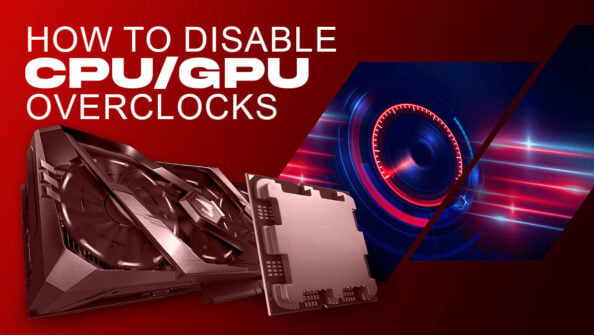
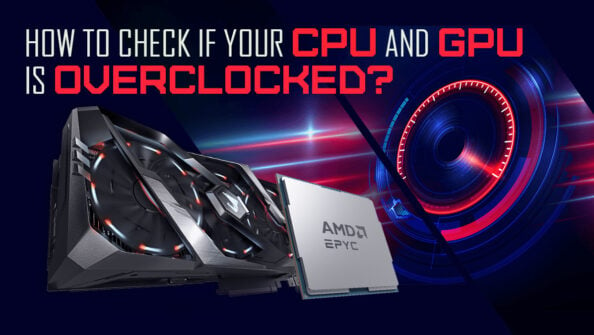
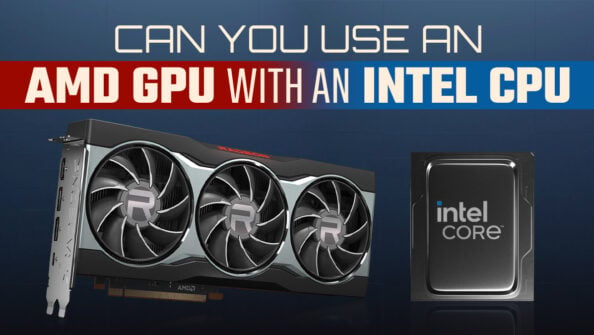
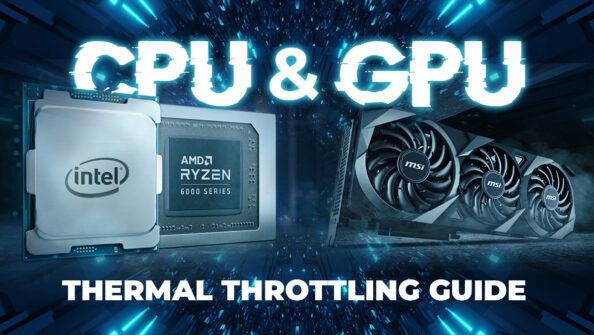

9 Comments
14 March, 2024
Literally! One of greatest article I have ever read.
20 August, 2023
I personally would like to get a CPU with an iGPU in the case that my graphics card dies that I’m not completely out of a PC so even if it’s fairly weaker than the GPU that I have, I’ll at least be able to turn my PC on and use it to an extent until I upgrade the discreet GPU.
20 August, 2023
It isn’t that much extra, and it works in the opposite direction, too, where you use the iGPU as a holdover until you can afford a discrete GPU. Good call!
20 May, 2023
Really enjoyed your article on best CPU’s with integrated graphics. I plan on using a Ryzin 7-5700G to build a multi-use PC for my grandson but I know he will use it a lot for gaming. I don’t want to spend the extra initially to include a discreet graphics card but will mostly likely add one at a later date. My main concern is whether the graphics card will be bottle-necked by this CPU or not? Note that the 7-5700G has half the L3 cache of the 5-5600.
21 May, 2023
I’d say that depends on what kind of refresh rate you’re going to be aiming for with that GPU, but as long as you’re within the range of 60 Hz to 120 Hz you’re unlikely to be severely bottlenecked. However if your son favors something like MMOs (with capacity for dozens of CPU-calculated players and entities in play at once), a stronger CPU may be warranted later down the line.
Mostly, I wouldn’t worry about it: any PC gamer worth half their salt knows they need to work within their limitations. But I don’t see a reason why the 5700G would throttle any GPU to unplayable framerates in a modern game. Of course, the performance on the iGPU will probably be best using FSR image scaling and lower gfx settings wherever possible.
15 February, 2023
Looking to build a new PC as my CPU is 12 years old now and I should probably move on 😳 😆
With the speed of new GPUs like the 4090 I’m thinking I’ll be fine with just 1 of those.
Do I need separate GPU to do the general PC side of things Windows/3ds Max/Chrome etc and only use the 4090 for rendering or would the 4090 be able to handle everything?
Also wondering if current GPUs on CPUs are now good enough to do everything but the rendering?
My actual workflow is mainly slowed by the stuff happening before the GPUs eventually start rendering.
21 May, 2023
Sorry for the late reply! In case these questions are still troubling you:
* The 4090 is more than enough for desktop use and whatever else you’re doing alongside it, yes.
* iGPUs are also more than enough for regular desktop use and even light gaming in places, but optimizing for that iGPU will become a little mini-game in its own right depending on what you’re playing.
29 June, 2022
I am interested in Intel Core i9-12900HK with only
UHD 770 graphics compared to
Ryzen 6900HX with only RDNA 2 iGPU without dedicated graphics card.
Everybody focusing on games, not on daily works. I need a 15 inch laptop with these using 64GB RAM for large Excel files. FHD 60Hz is enough.
4 July, 2022
You’re looking to compare the iGPUs of those two CPUs?
AMD Radeon 680M vs Intel Iris Xe Graphics G7 96EUs. The AMD Radeon is considerably more powerful in almost any benchmark.
Cheers,
Alex